
Armchair travel around the world!
Start your reading adventures with our FREE Reading Atlas.

- Around the World in 14 Books
- 7 Thrilling Book Series
- 6 Audiobooks That Are Like Theater For Your Ears


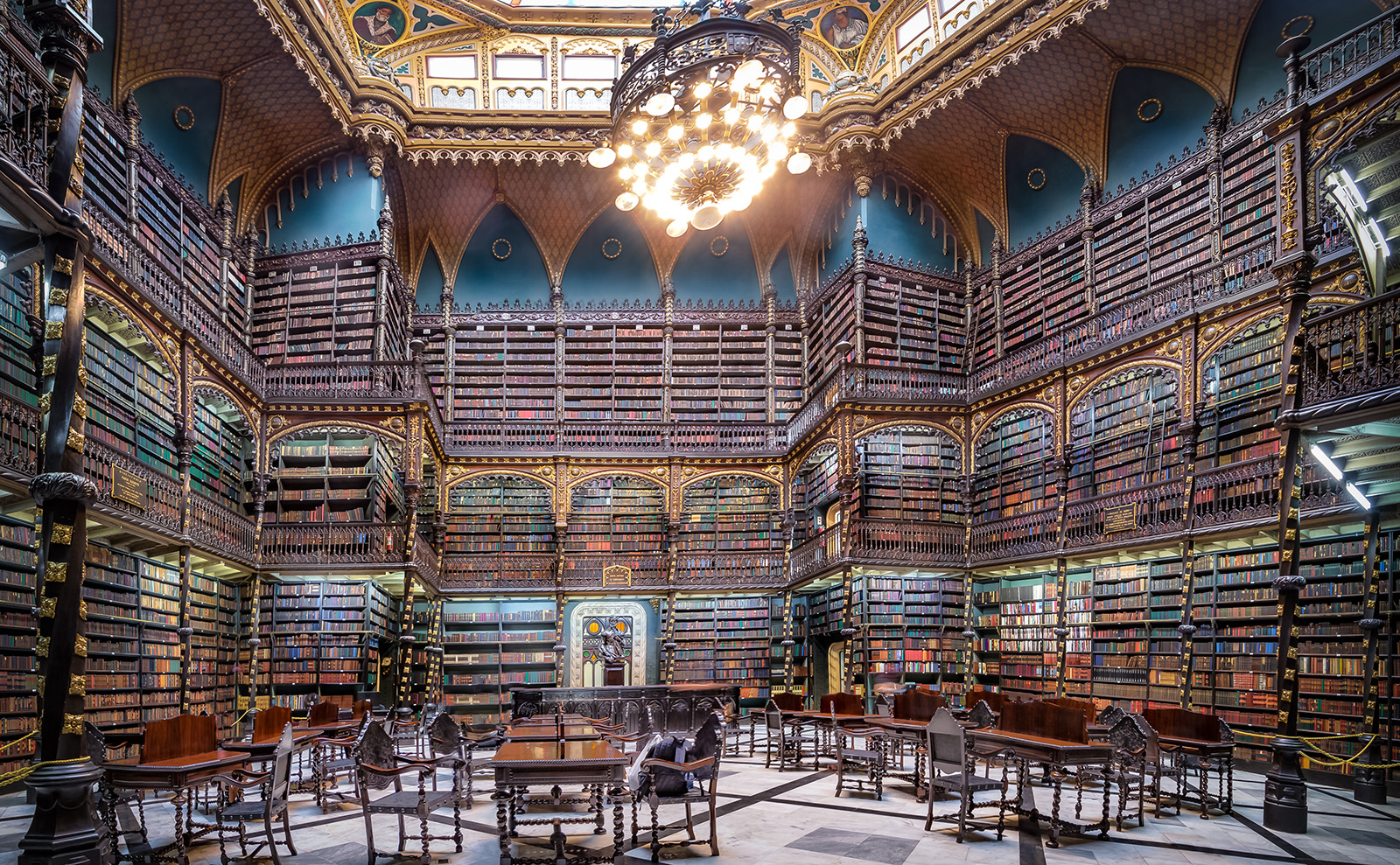
Sure, it’s officially known as the Royal Portuguese Cabinet of Reading, but we like to think of it as the Jewelry Box. With a stained-glass dome, floor-to-ceiling shelves that soar three stories, and jewel-toned book spines guarded over by Portuguese luminaries, this is the fantastical library of our dreams.
A Portuguese colony since 1500, Brazil gained its independence in 1822. But a group of 43 Portuguese immigrants and political refugees wanted to preserve their written heritage. The collection they started is now the largest collection of Portuguese works outside of Portugal. The almost 400,000 volumes include rare original manuscripts, significant literary works, and unique folios. We can only assume the book smell is overwhelmingly awesome.
This Gothic fantasyland was designed by architect Rafael da Silva e Castro. He made a cast-iron skylight and chandelier the crowning centerpiece of the Reading Room. The graduated stacks of books and gilded arches point like arrows toward the delicate glasswork above. (Underneath your feet, you’ll find a black-and-white tiled floor.)
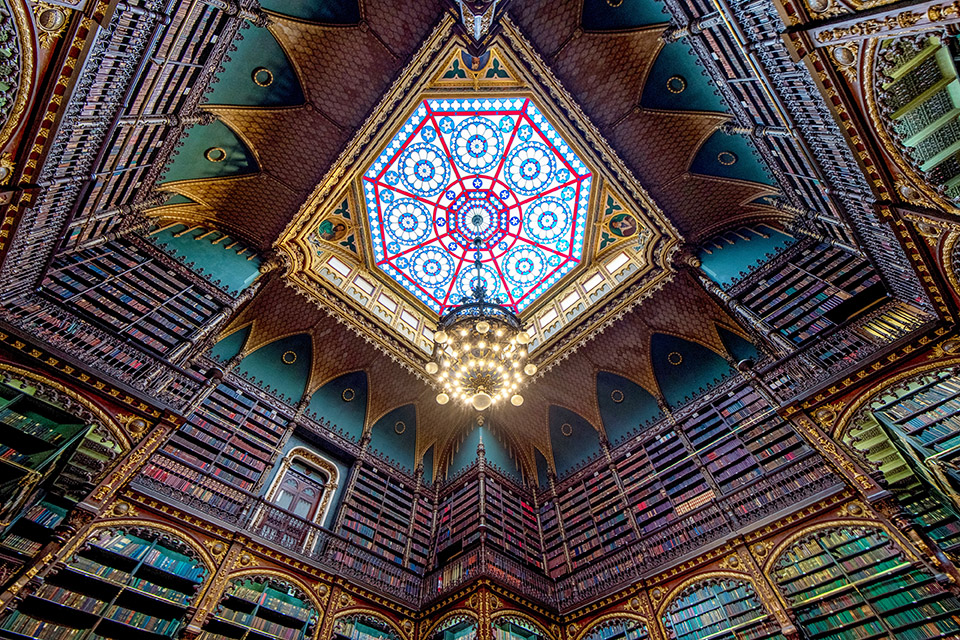
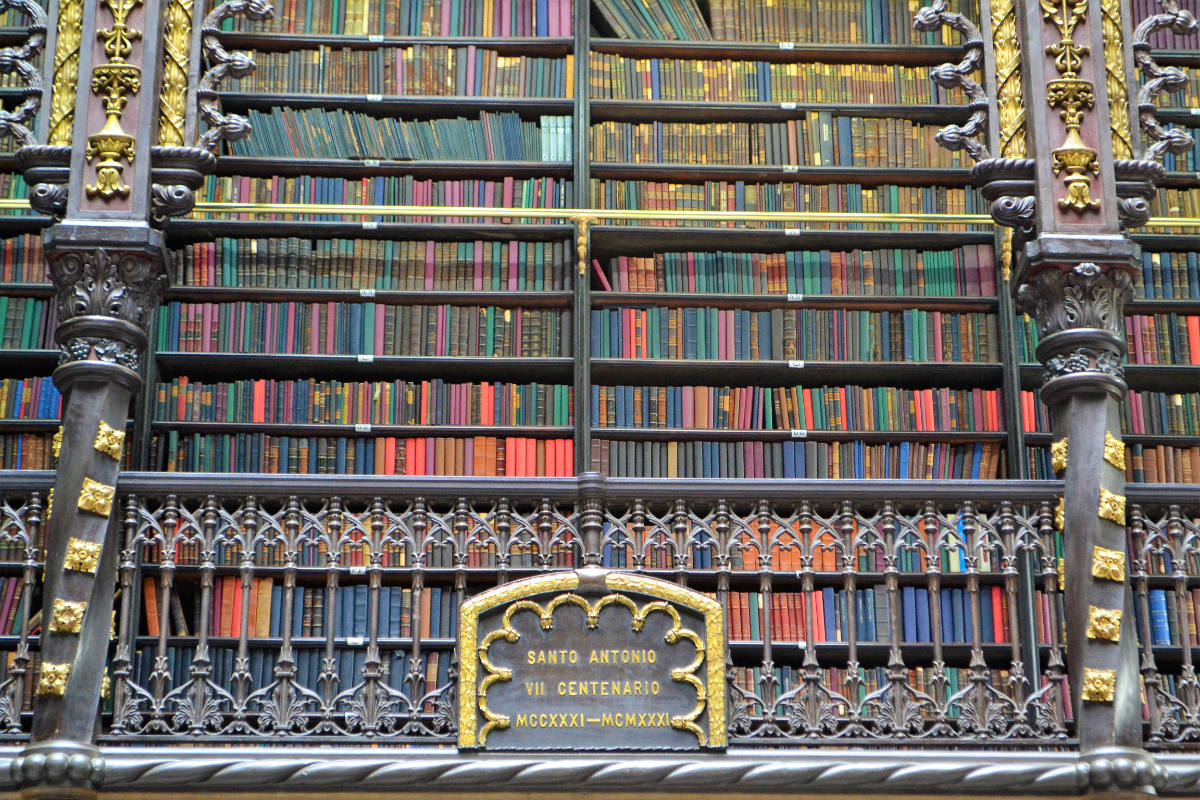
Statues depicting important Portuguese figures are tucked into nooks in the room, like this one of Luís de Camões. He is considered the Portuguese language’s greatest poet and is often (favorably) compared to Shakespeare and Homer. His most famous work is the epic poem Os Lusíadas, which was so influential, Portuguese is sometimes called ‘the language of Camões.’ A centerpiece of the library’s collection is a rare copy of Os Lusíadas from 1572.
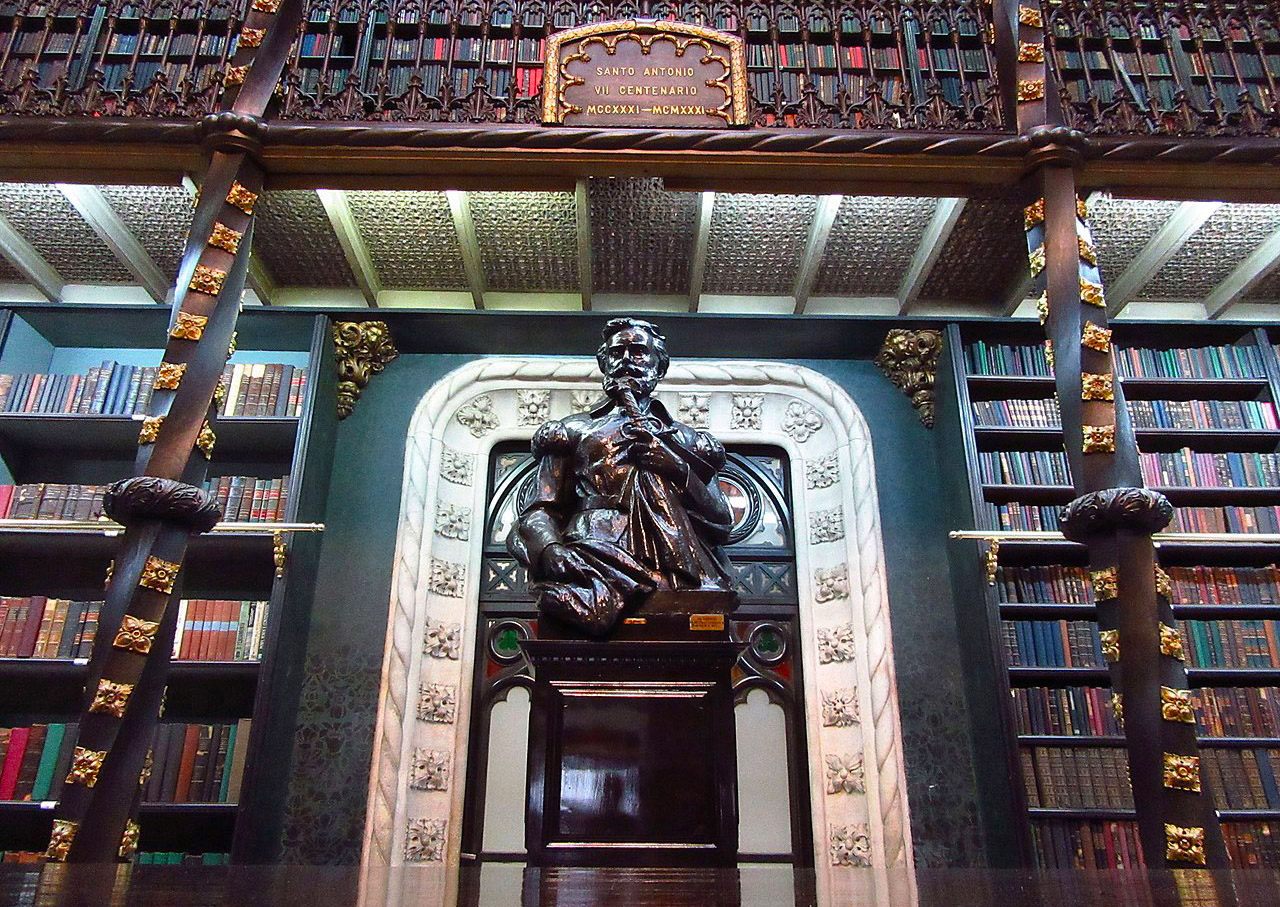
The façade of the library is constructed of Lisbon stone brought by ship from Portugal to Rio. Built in the Neo-Manueline revival style — based on the 16th-century architecture of Portugal — its design was inspired by the Jerónimos Monastery in Lisbon. (The interior also uses the Neo-Manueline style on its towering wooden bookcases and memorial alcoves.)
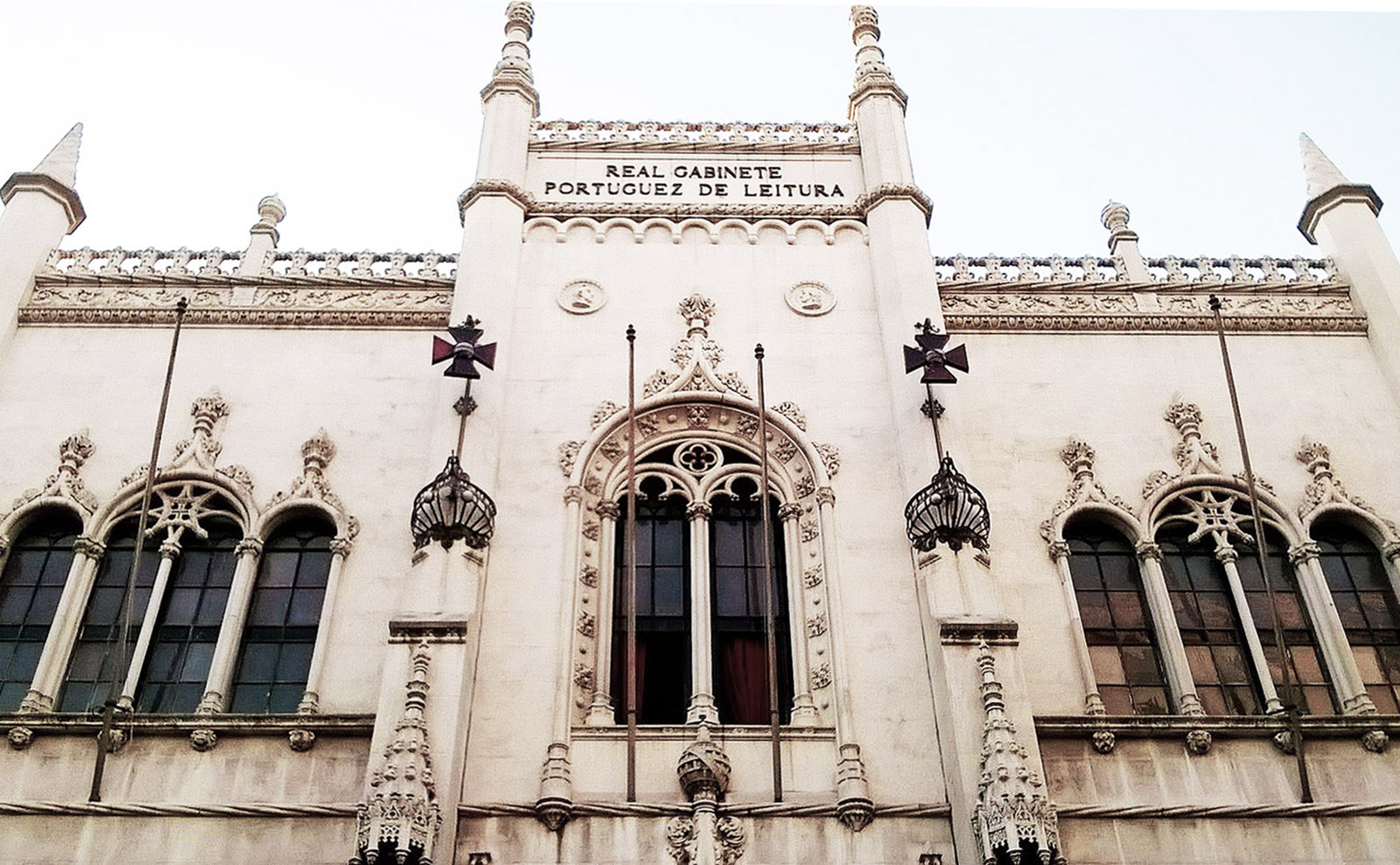
The entrance to The Royal Cabinet features statues of explorers Pedro Álvares Cabral, Infante D. Henrique, Vasco da Gama, and Luís de Camões. On the left is Infante D. Henrique, a.k.a., Prince Henry the Navigator — and peaking out from behind the statue of Luís de Camões, bedecked in a laurel wreath in the foreground, is Vasco da Gama.
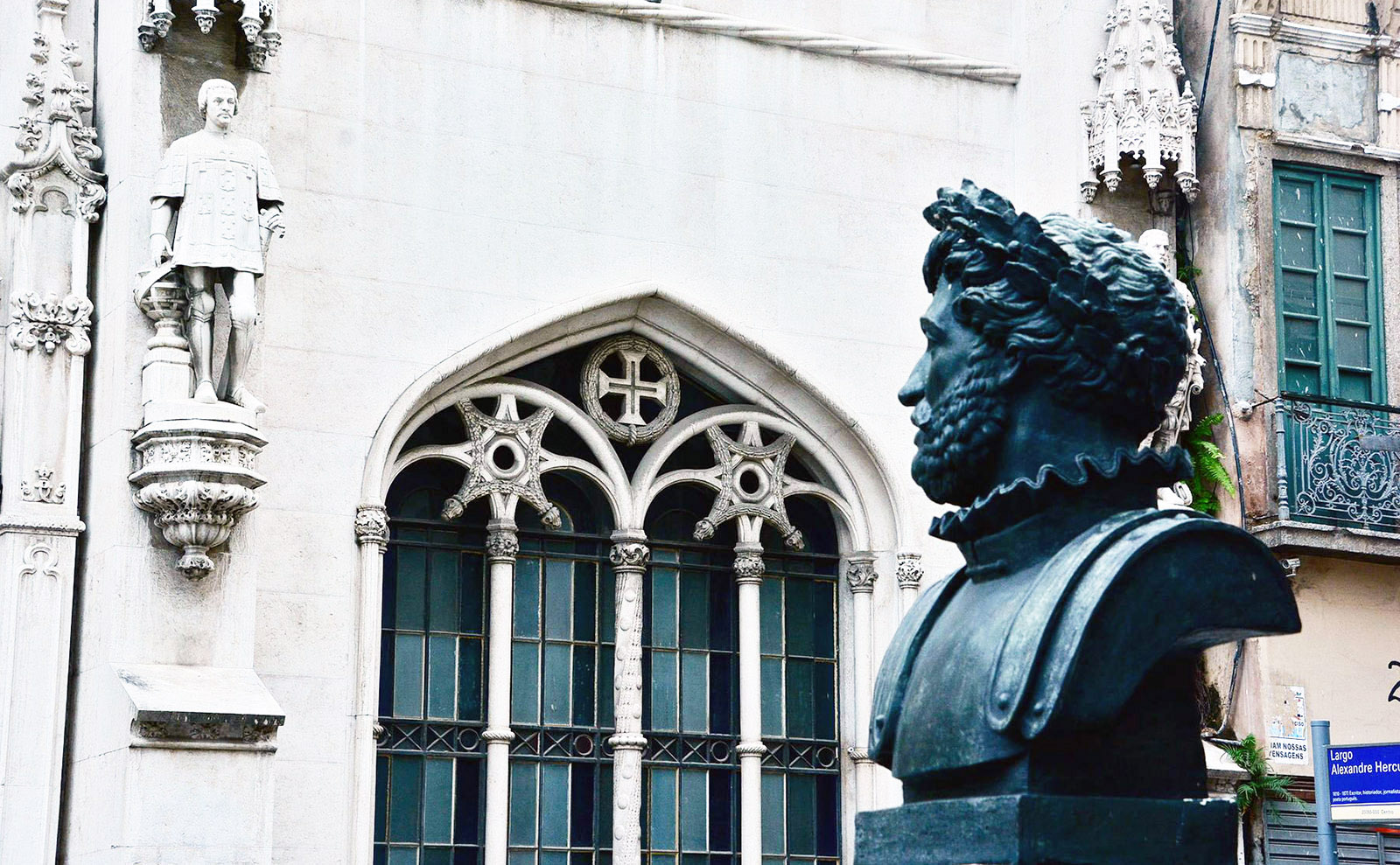
Here, poet Luís de Camões (left) and Prince Henry the Navigator (right) strike a pose and act as doormen.
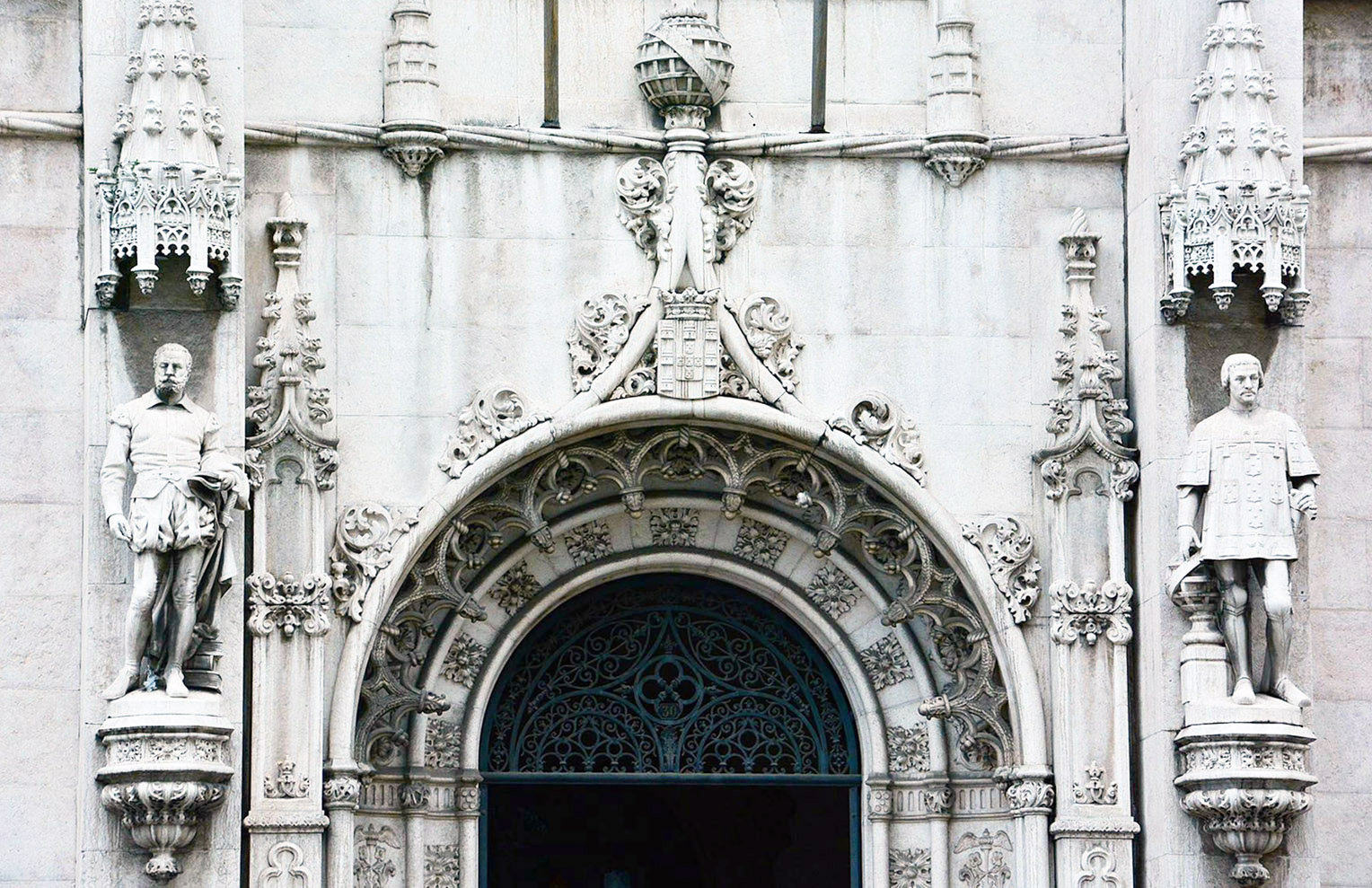
The library has been open to the public since 1900. Today, it publishes the magazine Convergência Lusíada, a journal of Portuguese literature and culture, and offers college-level courses on literature, the Portuguese language, history, anthropology, and the arts. You are welcome to visit this cathedral of knowledge without knowing a single word of Portuguese. Although you might want to practice saying, ‘Eu amo livros.’ (I love books.)

The Reading Room is open to the public and is located in the city center, so it’s easy to pop in and enjoy the splendor. For details on hours and other relevant information, visit the Real Gabinete Português De Leitura website.
Top image courtesy of Diego Grandi/Shutterstock.
Want to keep up with our book-related adventures? Sign up for our newsletter!
Can you help us? If you like this article, share it your friends!
Strong Sense of Place is a website and podcast dedicated to literary travel and books we love. Reading good books increases empathy. Empathy is good for all of us and the amazing world we inhabit.
Strong Sense of Place is a listener-supported podcast. If you like the work we do, you can help make it happen by joining our Patreon! That'll unlock bonus content for you, too — including Mel's secret book reviews and Dave's behind-the-scenes notes for the latest Two Truths and a Lie.
Join our Substack to get our FREE newsletter with podcast updates and behind-the-scenes info — and join in fun chats about books and travel with other lovely readers.

We'll share enough detail to help you decide if a book is for you, but we'll never ruin plot twists or give away the ending.
Content on this site is ©2025 by Smudge Publishing, unless otherwise noted. Peace be with you, person who reads the small type.